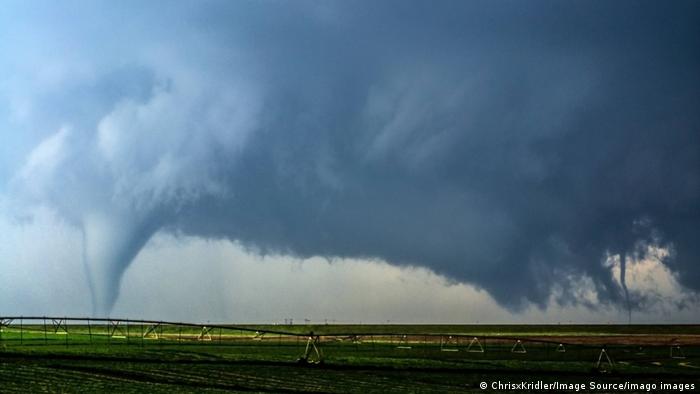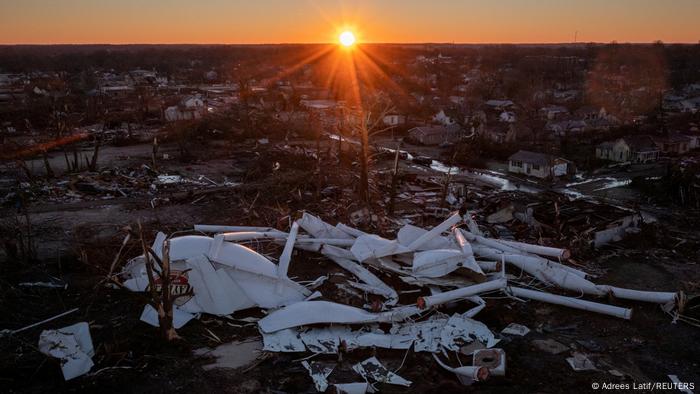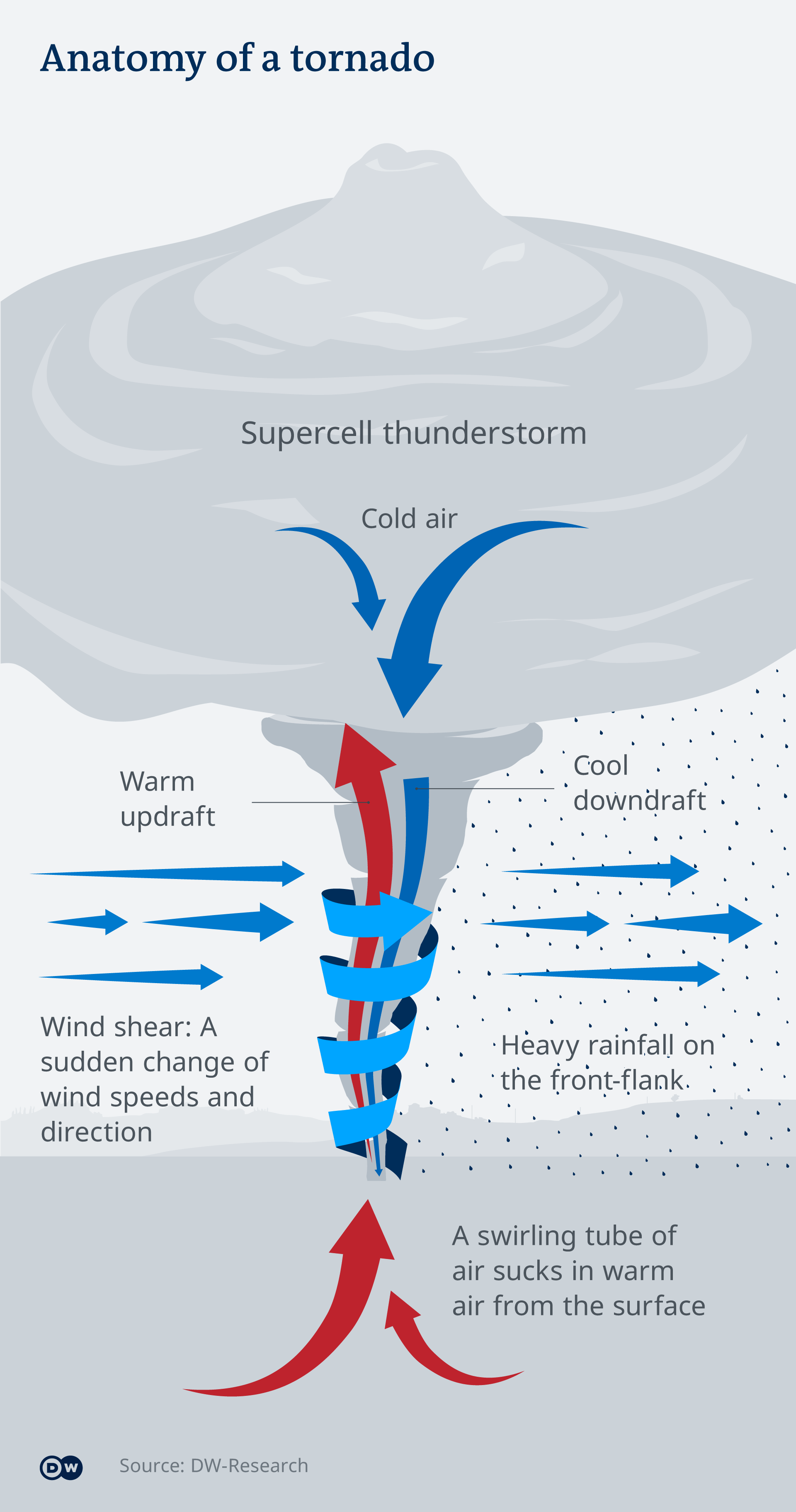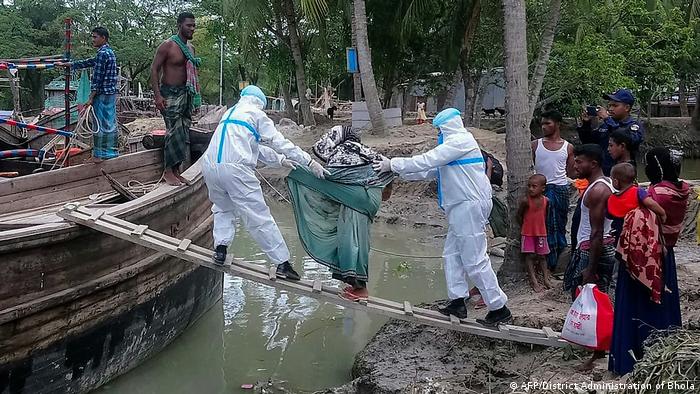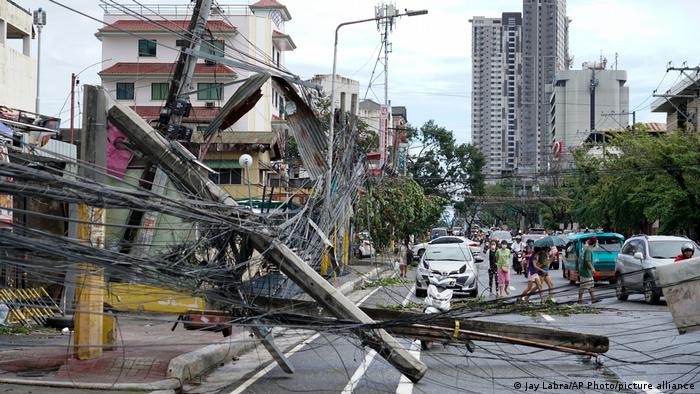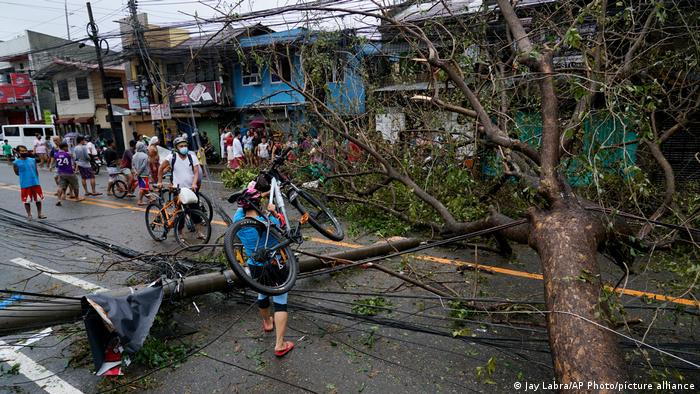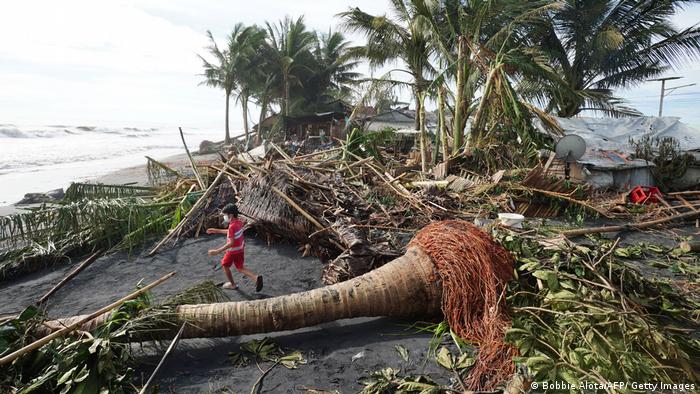Sviatlana Tsikhanouskaya, Maria Kolesnikova and Veronika Tsepkalo were announced as the winners to recognize their fight for "freedom, democracy and human rights" in Belarus. The prize was awarded in Aachen on Friday.

Veronika Tsepkalo (left), Sviatlana Tsikhanouskaya (center) and Maria Kolesnikova (right) received the award for their 'commitment to democracy'
Belarusian opposition leader Sviatlana Tsikhanouskaya was one of three winners of the 2022 Charlemagne Prize announced on Friday.
The chairman of the Charlemagne Prize Directorate, Jürgen Linden, said the panel wanted to recognize the "courageous commitment to freedom, to democracy, to the preservation of human rights and thus to European values" of Maria Kolesnikova and Veronika Tsepkalo, along with Tsikhanouskaya.
The laureates formed a "unique role model" against dictatorship, oppression and an unjust state, Linden said.
The recipients received the award "with great pleasure," the former mayor of Aachen added.
The trio will receive the honors in an award ceremony on May 26, 2022, at Aachen City Hall.
'Stay united': Belarus opposition leader Sviatlana Tsikhanouskaya speaks to DW
Opposition to Lukashenko
Tsikhanouskaya, 39, has become the face of the opposition to Alexander Lukashenko, who has led Belarus since 1994. Tsikhanouskaya contested last year's election in Belarus in place of her husband Siarhei Tsikhanouski, a blogger and critic of Lukashenko who was sentenced to 18 years in prison earlier this week.
The outcome of the 2020 election in Belarus, which saw Lukashenko secure a large majority, has been rejected by the United States and the European Union.
Who is Maria Kolesnikova?
Kolesnikova, meanwhile, is serving an 11-year sentence in Ukraine. Linden said her sister would join the other two award winners at the ceremony in Aachen next year.
Always at the forefront of the post-election protests in Minsk, Kolesnikova rose to become one of the most recognizable faces of the opposition movement that has accused Lukashenko of rigging the ballot.
In an interview with DW, Kolesnikova said it was always clear to her that she could be arrested at any time.
Who is Veronika Tsepkalo?
One of the three leaders of the democratic movement in Belarus, Tsepkalo succeeded in bringing together an unprecedented number of people to protest against Lukashenko, accusing his regime of violating human rights, falsifying elections and using brutality to quell dissenting voices.
Tsepkalo is currently working to protect women's rights in Belarus.
What is the Charlemagne Prize?
The prize, which was first awarded in 1950, is to recognize special services to European unification. Romanian President Klaus Iohannis was the most recent winner for his pro-European stance.
Former German chancellors Konrad Adenauer and Angela Merkel, as well as French President Emmanuel Macron and Pope Francis, are among previous award winners.
jsi/msh (dpa, AFP)
